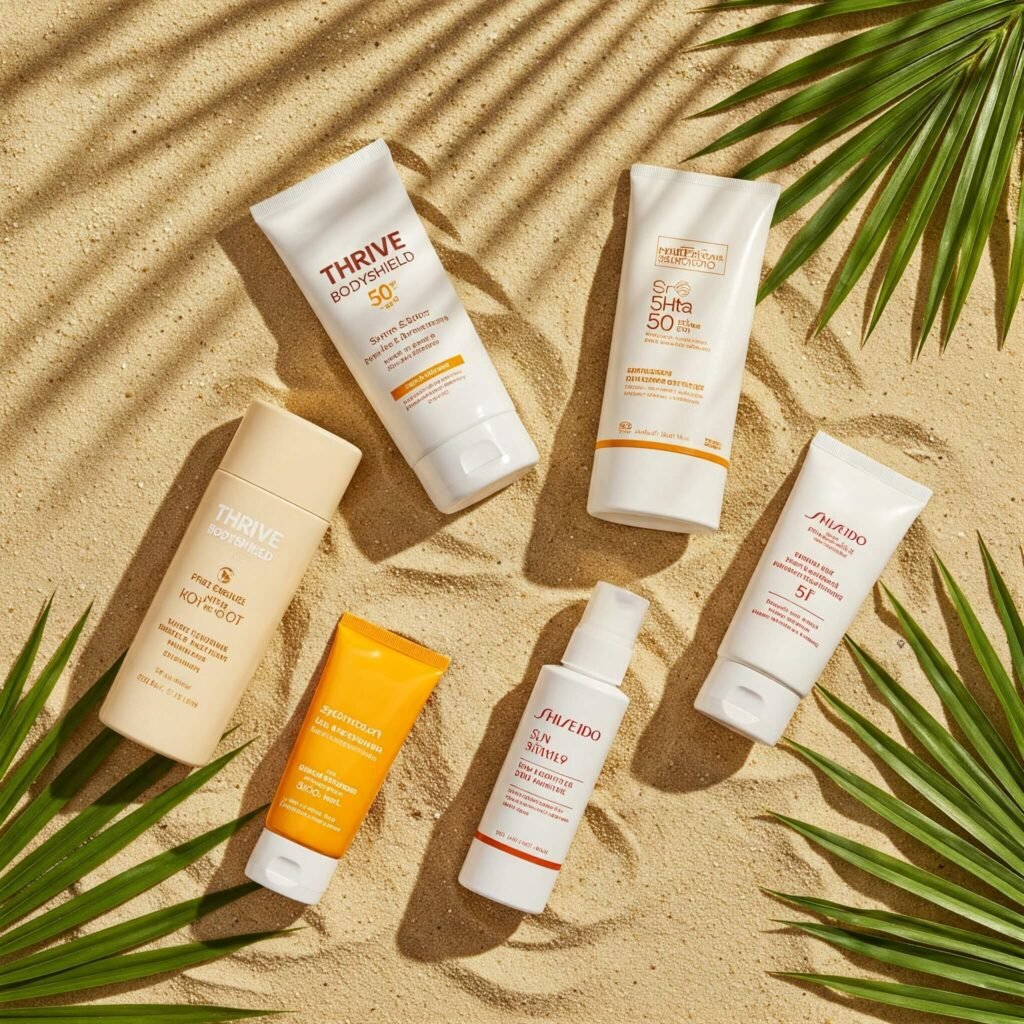Why Sun Protection Matters for Your Skin
Sun protection isn’t just about avoiding a sunburn—it’s the cornerstone of healthy, youthful skin. Harmful UV rays accelerate aging, cause wrinkles, and increase the risk of skin cancer. In fact, the Skin Cancer Foundation reports that daily SPF use can reduce melanoma risk by 50%. Whether you’re hitting the beach or running errands, the right sunscreen shields your skin and keeps it glowing. In this guide, we’ll explore the best sunscreens for 2025, offering expert picks and practical tips to elevate your sun protection game.
What Makes a Sunscreen Great for Sun Protection?
Not all sunscreens are created equal. To ensure optimal sun protection, look for these key features:
- Broad-Spectrum Protection: Shields against both UVA (aging) and UVB (burning) rays.
- SPF 30 or Higher: The American Academy of Dermatology recommends SPF 30+ for daily use.
- Water Resistance: Essential for swimming or sweating, reapply every 2 hours.
- Skin-Friendly Ingredients: Mineral sunscreens (zinc oxide, titanium dioxide) are gentler for sensitive skin.
Choosing a sunscreen you love ensures you’ll use it daily, making sun protection effortless.

Mineral vs. Chemical Sunscreens: Which Offers Better Sun Protection?
When selecting a sunscreen, you’ll encounter two main types:
- Mineral Sunscreens: Use zinc oxide or titanium dioxide to physically block UV rays. They’re ideal for sensitive skin and reef-safe, like Thrive Bodyshield SPF 50.
- Chemical Sunscreens: Absorb UV rays with ingredients like avobenzone. They blend seamlessly but may irritate sensitive skin.
Pro Tip: If you have darker skin, opt for a mineral sunscreen with no white cast, like Unsun Cosmetics Mineral Tinted Face Sunscreen.
Top Sunscreens for Sun Protection in 2025
Here are our expert-recommended sunscreens for healthy, youthful skin, based on testing and dermatologist insights:
- Thrive Bodyshield SPF 50
- EltaMD UV AOX Elements SPF 40
- Shiseido Ultimate Sun Protector Lotion SPF 50+
Actionable Takeaway: Test a small patch of sunscreen on your wrist to ensure it suits your skin type before full application.
Reef-Safe Sunscreens for Eco-Friendly Sun Protection
Concerned about ocean health? Reef-safe sunscreens avoid harmful chemicals like oxybenzone. Favorites include Hero Superlight Sunscreen SPF 30 and Badger Daily Mineral Sunscreen SPF 30, both gentle on marine ecosystems. Always check ingredient lists and choose products labeled “reef-safe” for guilt-free sun protection.
How to Maximize Sun Protection for Youthful Skin
Sunscreen is just one part of a robust sun protection strategy. Follow these tips to keep your skin healthy and radiant:
- Apply Generously: Use a shot glass worth (~1 oz) for full-body coverage.
- Reapply Often: Every 2 hours, or after swimming/sweating, for continuous protection.
- Layer with Clothing: Wear wide-brimmed hats and UV-protective sunglasses.
- Seek Shade: Avoid direct sun between 10 a.m. and 2 p.m., when UV rays are strongest.
Real-World Example: Sarah, a 35-year-old hiker, switched to daily SPF 50 and UPF clothing. After a year, she noticed fewer fine lines and a more even skin tone, proving sun protection’s anti-aging power.

Common Sun Protection’s Myths Debunked
Let’s clear up some misconceptions about sun protection’s:
- Myth: Sunscreen causes skin cancer.
- Myth: Darker skin doesn’t need sunscreen.
Data Insight: A Harvard study found sunscreen users had a 40% lower risk of squamous cell carcinoma over four years.
Building a Sun Protection Routine for Healthy Skin
Incorporate sunscreen into your daily skincare routine for maximum benefits:
- Cleanse: Start with a gentle cleanser to prep your skin.
- Moisturize: Apply a lightweight moisturizer.
- Sunscreen: Use a broad-spectrum SPF 30+ as the final step before makeup.
- Reapply: Carry a travel-sized sunscreen for touch-ups.

For inspiration, check out Curology’s sunscreen blog for personalized skincare tips: Curology Sunscreen Blog.
Conclusion: Embrace Sun Protection for Radiant Skin
Sun protection’s is your skin’s best friend, shielding it from UV damage and preserving its youthful glow. By choosing the right sunscreen—like Thrive Bodyshield or EltaMD—and pairing it with smart habits, you’ll enjoy healthy, radiant skin for years to come. Start today: pick a broad-spectrum SPF 30+, apply it daily, and make sun protection a non-negotiable part of your routine.
CTA: Share your favorite sunscreen in the comments or explore more sun safety tips at SkinCancer.org
































